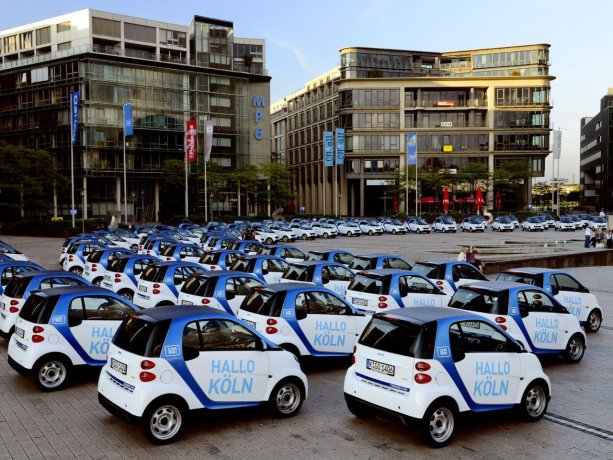Rather than spend 100 billion on EV rebates, spend it on EVs for public carsharing

The 100 billion in Bidens infrastructure plan towards EV rebates is a good policy and is an improvement over the Obama 2.4 billion tax credit plan for EVs, however a different policy could offer much better results in terms of achieving a reduction in emissions and resource use and the adoption of EVs for the same buck. This policy is called public EV carsharing.
First to the last part of this policy, carsharing. Carsharing is known to reduce emissions even if only gas-powered cars are used, by 51 % (Chen and Kochelman, 2018). If EVs are used, the results are astounding and can only be matched by electric buses and rail and subway systems. It is to be expected, that emissions will be reduced by far more than with the EV rebates plan and if EVs replace gas cars in traditional ownership, than without extensive carsharing.
Coming to the EV part of this plan, this plan will enable a much greater EV adoption rate for the same buck. If the scheme is public and not operated by a private company, then we can a achieve near 50 % adoption rate of all driven cars with 100 billion and this is guaranteed. With EV rebates the results will be meager and unsure. Even if you have to purchase the whole car in this plan, carsharing is estimated to replace between 5 to 20 cars in traditional ownership, if you take that to 10 as the average and take 30k as the average price of an EV, you can purchase the equivalent of 33 million EVs in traditional ownership.
To the third and most important part of the plan, that it will be public. This is a contentious issue, mainly because of the neoliberal legacy of Reaganism, however it is a fact, that public services and public goods are beneficial for the wider society in economic terms, because they offer the advantages of centralization and monopolization without the disadvantages of private monopolies. The main argument is, it will be cheaper for the end-user and the build-up of the fleet will be much faster than if subsidies were used. That it must be cheaper to replace traditional ownership is self-evident, however private companies will also not have the capital necessary to invest so heavily as to replace 33 million cars in traditional ownership in just a couple of years. A public program will also enable greater efficiency, because the cars won´t be from competing companies and cross-travel between cities and use for vacations would be enabled. With 100 billion spent on the program, the carsharing service would be almost free, as only the electricity and maintenance costs would have to be covered. Alternatively, with just a 300 billion loan, we could provide cheap access to EV carsharing for everyone in urban areas and it would be a cheaper option than traditional ownership. With this loan, we could achieve a 80 percent adoption rate for EVs in under 5 years. Even if the rebate plan will be adopted instead of giving the 100 billion to public EV carsharing, this loan should be apportioned anyway, because it will be a deficit neutral and budget neutral way of ensuring EV adoption and achieving the target of the Paris Accords.
One additional advantage of carsharing is much more reduced resource use per passenger mile driven, because less cars have to be built, less batteries have to be built, less lithium and precious metals have to be mined. This is a very important point from a sustainability perspective and as important as the emissions reduction.
If it makes you uncomfortable, that the government would provide you this service, it could be also done by a cooperative of consumers, that would operate as a cheap alternative to a capitalist company.
This 100 billion plan will provide for a guaranteed and fast 33-50 % adoption rate of EVs and offer a fast and reliable way of reducing emissions and reducing them by more than with the EV rebates. The 300 billion loan plan would achieve a 80 % adoption rate of EVs in 5 years and be a budget neutral way of achieving this. Alone this policy will reduce GHG emissions by 15-30 % (15 % for the 100 billion plan, 30 % for the 300 billion loan plan), which will go a long way towards meeting the Biden target and the target of the Paris Accords.















